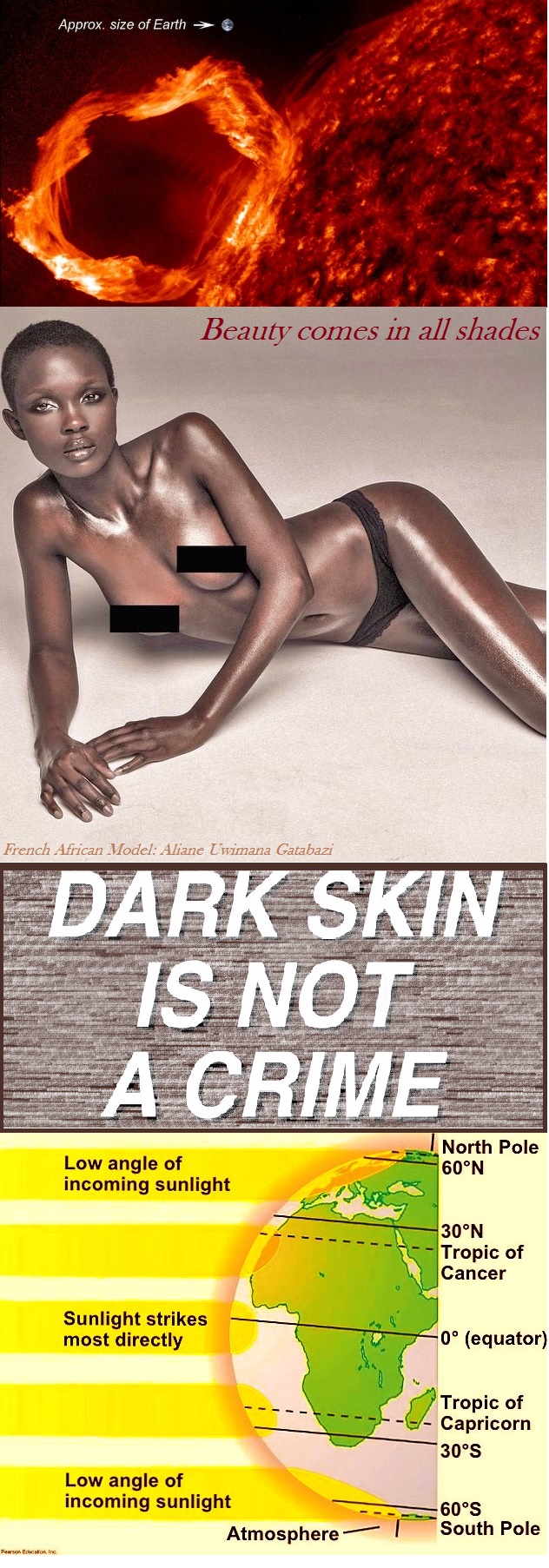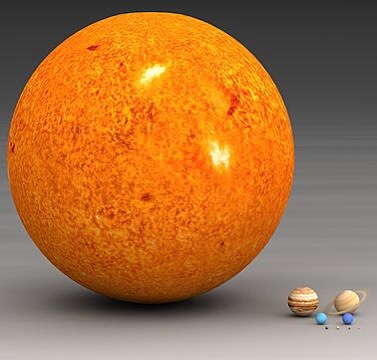On earth, the equator receives more sunshine than do the poles. This is due to simple geometry of the earth’s curvature, a given amount of sunshine in a beam falling on the equator, which points directly at the sun, has a much more intense effect than the glancing rays spread over a much larger area of the curving surface near the poles. In addition, extensive ice and snow at the poles reflects back to space some of the sun’s energy that reaches the earth. Much more sunshine is absorbed to heat the earth at the equator. This means the land at the equator becomes hotter than the poles. If we had no atmosphere or oceans, the equator would become too hot for life as we know it, and the poles too cold. However, the atmosphere and oceans take some of the excess heat from the equator to the poles, making both habitable to humans. An interesting connection to make is that if the earth were heated evenly at all latitudes there would be no winds or ocean currents.
–Why are places near the equator hotter? – Past Question
Many cultures thrive in warm equatorial regions. The Fang people of Gabon, for instance, are successful farmers who take advantage of the warm temperature and long rainy season to cultivate crops such as corn, yams, and plantains. The Fang also raise livestock that have adapted to the climate, such as goats and chickens.
Not all equatorial regions are hot and humid, however. Mount Kilimanjaro, Tanzania, is only 330 kilometers (205 miles) from the Equator, but its elevation creates a climate with cool, dry weather and even alpine glaciers.

The Andes are another equatorial region lacking the hot, humid climate often associated with the Equator. The mountain range includes a desert with almost no rain (the Atacama), as well as some of the tallest peaks on Earth. Here, too, cultures have thrived for thousands of years. The Aymara people of the Altiplano of Bolivia, Peru, and Chile, are primarily an urban people who identify strongly with the innovative navigational successes of their ancestors. In the 20th century, the Aymara helped build railroads through the high, equatorial Andes.
Many plant and animal species thrive in equatorial climates. The Amazon and Congo rain forest ecosystems, for example, are amazingly rich in biodiversity. A single hectare (2.47) of rain forest in Brazil may contain 750 species of trees and twice that many species of insects. The equatorial savanna of Kenya includes mammals such as lions, cheetahs, and elephants. The chilly equatorial Andes are famous for its camelid species: llamas, alpacas, vicunas, and guanacos.
– education.nationalgeographic.org/encyclopedia/equator
https://youtu.be/3lROVjOSdDQ
3,000 Year Old Egyptian Woman with 70 HAIR EXTENSIONS Intact
The Sun and planets to scale Diameters: Sun – 1,392,684km Jupiter – 142,984km Saturn – 120,660km Uranus – 51,800km Neptune – 49,500km Earth – 12,750km Venus – 12,100km Mars – 6,800km Mercury – 4,800km.

https://vimeo.com/16210769
shadeism.com | This documentary short is an introduction to the issue of shadeism, the discrimination that exists between the lighter-skinned and darker-skinned members of the same community. This documentary short looks specifically at how it affects young women within the African, Caribbean, and South Asian diasporas. Through the eyes and words of 5 young women and 1 little girl – all females of colour – the film takes us into the thoughts and experiences of each. Overall, ‘Shadeism’ explores where shadeism comes from, how it directly affects us as women of colour, and ultimately, begins to explore how we can move forward through dialogue and discussion.
www.vox.com/2014/10/10/6943461/race-social-construct-origins-census

[…] Why are places near the equator hotter? […]
[…] Why are places near the equator hotter? […]